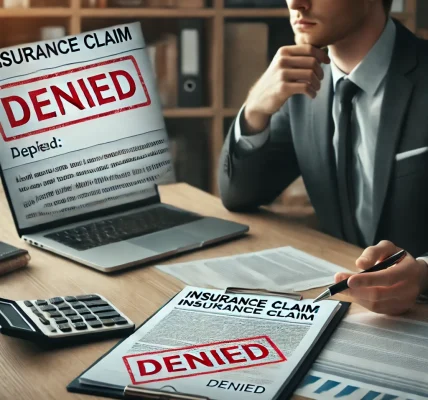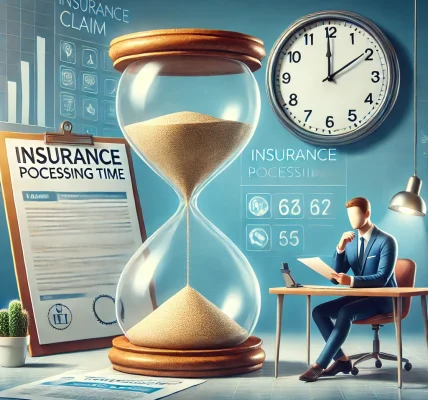Filing an insurance claim can be a complex and stressful process. One of the most crucial factors that determine the success of your claim is the evidence you provide. Strong documentation supports your case, speeds up processing, and increases the likelihood of receiving a fair settlement.
In this guide, we’ll explore the importance of evidence in insurance claims, the types of documentation you need, and best practices for ensuring your claim is processed smoothly.
Why Evidence is Essential in Insurance Claims
Insurance companies require evidence to assess the validity of claims. Without proper documentation, your claim may be delayed, underpaid, or even denied. Evidence helps to:
- Prove the occurrence of the incident
- Establish the extent of damage or injury
- Confirm policy coverage
- Support the claimed compensation amount
- Prevent disputes with the insurer
Providing clear, well-documented proof makes it easier for the insurance adjuster to evaluate and approve your claim.
Types of Evidence You Need for an Insurance Claim
1. Photographic and Video Evidence
One of the most effective ways to document an incident is through pictures and videos. These visual records provide undeniable proof of damage, injury, or loss.
Best Practices:
- Take clear, high-resolution photos of the scene immediately after the incident.
- Capture multiple angles to show the extent of the damage.
- Include timestamps if possible to verify the authenticity.
- For car accidents, photograph vehicle damage, road conditions, and traffic signs.
- For property damage, document structural issues, broken items, or water leaks.
- In personal injury cases, take pictures of visible injuries and any contributing hazards.
2. Police or Incident Reports
For claims involving accidents, theft, or significant damage, a police report or incident report can serve as official documentation.
Why It’s Important:
- It provides a neutral third-party assessment of the incident.
- It records essential details like date, time, location, and parties involved.
- It may contain witness statements and initial cause evaluations.
Always request a copy of the report and submit it with your claim.
3. Witness Statements
If there were witnesses to the incident, their statements can support your claim by providing an independent account of what happened.
Tips for Collecting Witness Statements:
- Obtain the full name and contact details of witnesses.
- Ask them to describe what they saw in writing or a recorded statement.
- Ensure their statement is factual and unbiased.
- If possible, request a signed and dated witness statement.
4. Medical Records and Bills
For health-related claims or injuries resulting from an accident, medical documentation is critical.
What to Provide:
- Doctor’s diagnosis and treatment details
- Hospital and emergency room reports
- Medical bills and receipts
- Prescriptions and follow-up treatment recommendations
- Medical test results (X-rays, MRIs, etc.)
Medical evidence helps justify the cost of medical treatment and the severity of injuries.
5. Repair Estimates and Receipts
For property or vehicle damage claims, repair estimates and receipts help establish the cost of fixing or replacing damaged items.
Best Practices:
- Obtain multiple estimates from licensed professionals.
- Keep receipts for any temporary repairs or immediate expenses.
- Submit before-and-after pictures if possible.
- Ensure the estimates include detailed breakdowns of costs.
6. Correspondence with the Insurance Company
Maintaining a record of all communications with your insurance provider ensures transparency and can be useful in case of disputes.
What to Keep:
- Emails and letters related to the claim
- Notes from phone calls, including the name of the representative and details discussed
- Claim reference numbers
- Any written commitments or approvals from the insurer
7. Proof of Ownership or Value
For lost, stolen, or damaged items, proof of ownership helps validate your claim.
Examples:
- Receipts or invoices for high-value items
- Credit card or bank statements showing the purchase
- Appraisals for expensive belongings (jewelry, artwork, etc.)
- User manuals, warranty documents, or original packaging
How to Organize Your Evidence for a Strong Claim
To improve your chances of a successful claim, keep your evidence well-organized and easily accessible.
Best Practices:
- Create a digital and physical folder for all claim-related documents.
- Label documents clearly (e.g., “Car Accident Photos – March 2025”).
- Arrange evidence in chronological order.
- Make multiple copies in case documents are lost.
- Use cloud storage to keep backup copies of digital files.
What Happens If You Lack Sufficient Evidence?
Without strong evidence, your claim may face challenges such as:
- Delayed processing – The insurer may request additional proof, slowing down the claim.
- Lower settlement offers – Weak documentation can result in reduced payouts.
- Claim denial – If the insurer cannot verify your claim, they may reject it.
If you’re missing critical evidence, try to gather alternative proof, such as:
- Written statements from repair professionals
- Affidavits from witnesses
- Digital transaction history for lost receipts
Final Thoughts
Providing strong and well-documented evidence is key to a successful insurance claim. By following these guidelines, you can ensure your claim is processed efficiently and fairly.
Whether it’s an accident, property damage, or medical claim, having the right evidence improves your chances of receiving the compensation you deserve. Stay proactive, stay organized, and don’t hesitate to seek assistance from an insurance adjuster if needed.
Would you like a sample checklist to help you gather evidence for your insurance claim? Let us know!




